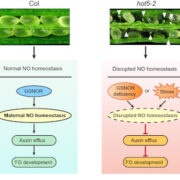
Maternal nitric oxide is key to female gametophyte development and plant fertility
The Plant Cell: In a NutshellWang et al. investigate how disruption of maternal nitric oxide affects female gametophyte development and fertility under both optimal and stress conditions.
By Junzhe Wang1,3, Xiaolong Guo1, Shengbao Xu1 and Elizabeth Vierling2
1State Key Laboratory for Crop Stress Resistance and High-Efficiency…
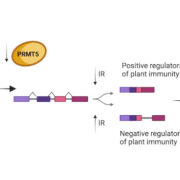
When posttranslational modifications meet splicing to regulate stress responses
The Plant Cell: In a NutshellAgrofoglio et al. explore how the methylation of arginine residues on a key splicing factor affects alternative splicing.
Julieta Mateos, María José Iglesias, Yamila Agrofoglio. IFIBYNE-UBA-CONICET
https://doi.org/10.1093/plcell/koae051
Background: Plants are constantly subjected to a variety…
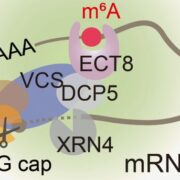
The Role of ECT8 in Decoding Salt Stress Resistance in Plants
The Plant Cell: In a NutshellZhihe Cai (Synthetic and Functional Biomolecules Center, Beijing National Laboratory for Molecular Sciences, Key Laboratory of Bioorganic Chemistry and Molecular Engineering of Ministry of Education, College of Chemistry and Molecular Engineering, Peking University, Beijing 100871, China)
https://doi.org/10.1093/plcell/koae149
Background:…
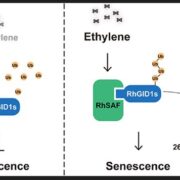
Ethylene antagonizes gibberellin signaling to accelerate petal senescence
The Plant Cell: In a NutshellLu, Zhang et al. investigate the mechanisms of phytohormone cross-talk underlying rose petal senescence
By Jingyun Lu, Guifang Zhang, Yunhe Jiang, and Junping Gao
China Agricultural University
https://doi.org/10.1093/plcell/koae035
Background:
Rose (Rosa hybrida) is the queen of flowers,…
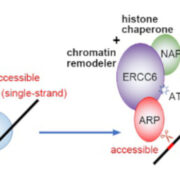
A chromatin remodeler and a histone chaperone help repair DNA
The Plant Cell: In a NutshellFan et al. investigate the proteins involved in DNA base excision repair
https://doi.org/10.1093/plcell/koae052
By Tianyi Fan and Yan Zhu
Background: DNA bases are susceptible to damage from environmental factors such as UV light or reactive oxygen species. Base excision repair (BER) can eliminate…
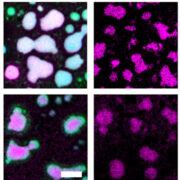
Linker histone H1 drives heterochromatin condensation
The Plant Cell: In a NutshellHe et al. explore how histone H1 drives the formation of heterochromatin foci.
https://doi.org/10.1093/plcell/koae034
Xiaoqi Feng, Institute of Science and Technology Austria
Background: To fit into the nucleus, DNA is densely packaged into structures known as nucleosomes. These nucleosomes…
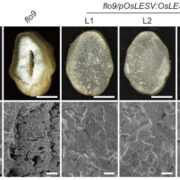
OsLESV cooperates with FLO6 to modulate starch biosynthesis and endosperm development
The Plant Cell: In a NutshellOsLESV cooperates with FLO6 to modulate starch biosynthesis and endosperm development
Yan, Zhang, Wang et al. identify OsLESV–FLO6 as a non-enzymatic molecular module responsible for starch biosynthesis and endosperm development.
https://doi.org/10.1093/plcell/koae006
By Haigang Yan, Wenwei…

Putting it together: CEPA1 functions as a Photosystem I assembly factor
The Plant Cell: In a NutshellBackground:
Photosystem I (PSI) is a large pigment-protein complex that participates in photosynthetic electron transfer. While its structure is well resolved, its assembly pathway is less clear. A set of proteins mediating the step-wise assembly of PSI subunits, known as PSI assembly factors, has…
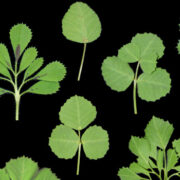
Regulation of leaflet number in compound leaves
The Plant Cell: In a NutshellHe et al. investigate the molecular mechanisms of compound leaf formation in Medicago truncatula
By Liangliang He and Jianghua Chen
https://doi.org/10.1093/plcell/koae033
Background: In the plant kingdom, leaves have different shapes, with the most noticeable difference being between simple…

